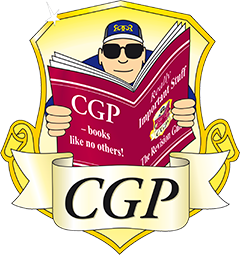Recently, I (along with the other Year 5 & 6 staff) was tasked with delivering a staff meeting all about good practice when teaching Maths. As we received positive feedback from the rest of the staff, I thought I’d share some of our ideas with you.
I wanted to ensure we made the staff meeting practical and interesting so we started by asking the other members of staff to complete various maths activities either in pairs or in groups.

The activities were based on objectives from the curriculum for Year 5 & 6 curriculum – this was so that everybody, regardless of the year group they teach, could see the expectations for the end of Key Stage 2. Unsurprisingly, some people were shocked by the level of challenge.
It is essential that children are secure with the basics before entering Upper Key Stage 2 as we can’t introduce them to more advanced concepts if they are still unsure about times tables, number bonds, inverse operations, place value etc.
Across the school, we now embed further opportunities for reasoning within our Maths lessons. This is because children are more likely to retain mathematical ideas if they are able to explain their thinking. It is for this reason that we have introduced ‘Thinking Grids’.

On these ‘Thinking Grids’, a question is posed and the children must respond below – not only with their working out and the correct answer, but also with a written explanation of the steps they took and why they did so. The children enjoy the challenge of these grids and I have, without a doubt, seen progress in their approaches to problem-solving. As you would expect, some children do find it difficult to write about their reasoning – in their words, they “just know”. So, to help these children with their explanations, I created a range of Maths sentence starters.
In addition to the thinking grids, I also use a range of other documents to help my pupils achieve greater depth in Mathematics.

Although they have now been archived, I still find the old Pitch and Expectations documents useful when planning for challenge in Maths. Admittedly, the questions don’t necessarily match the current curriculum, however if you search through the documents for other year groups, you can find some excellent examples of SATs style questions for children of all abilities.
Additionally, if you register with NCETM, you are able to download a range of documents to aid in the teaching of Maths at Mastery level (assessment materials, progression maps, reasoning documents etc.).
Logic puzzles are another great way of engaging children in problem-solving and encouraging them to look at problems in different ways. Again, despite having been archived, the old National Strategies Puzzles and Problems documents are a really useful resource.

As well as offering advice on different documentation to help with the planning and delivery of challenge within Maths, I also wanted to share examples of my Maths planning. I’m sure you all have your own effective methods for planning Maths but personally, I find it useful to highlight sections of my planning in different colours. I use one colour to show which groups I’ve planned adult support for, another colour for groups that will be using ICT and a third colour for groups completing reasoning activities. This way, I can ensure that I have planned for all ability groups to have access to support, ICT and reasoning opportunities throughout the week. Obviously this is subject to change during the week and I would just annotate my planning accordingly.
Another topic discussed in the staff meeting was the use of practical and real-life opportunities within Maths. Maths is a lot more enjoyable for children if they can apply it to their real lives or use physical resources. You can see how it could become tedious just completing question after question from a textbook. Some examples of when I have used practical and real-life opportunities are:
- When learning about area and perimeter, children had to measure the perimeter around our adventure playground and the area within. They then had to use this information to calculate the cost of new fencing and turf using a garden centre catalogue.
- Children planned a party for the Queen’s 90th birthday. They were given a budget and access to a supermarket’s website in order to produce a shopping list for their class’s celebration. They had to calculate the required quantity of each item as well as the total price and change.
- On another occasion, children were given a recipe for a cake and they first had to work out the amount of each ingredient needed using fractions, ration and proportion. They then had to use their measuring skills to accurately weigh the different ingredients.
- Pupils in my class have also used lego to create symmetrical patterns or to calculate fractions of different colours in a pattern.
I hope this post has been able to give you some useful tips or ideas and if not, it’s always useful just to see what other people are doing. Thank you for reading!






